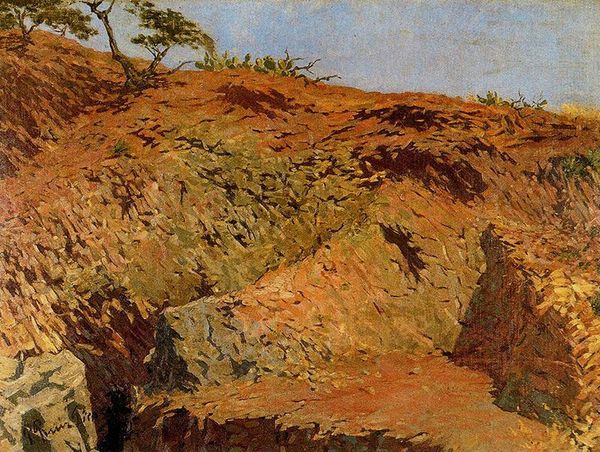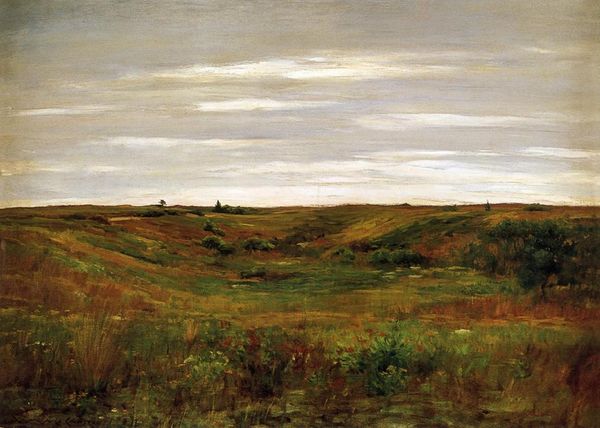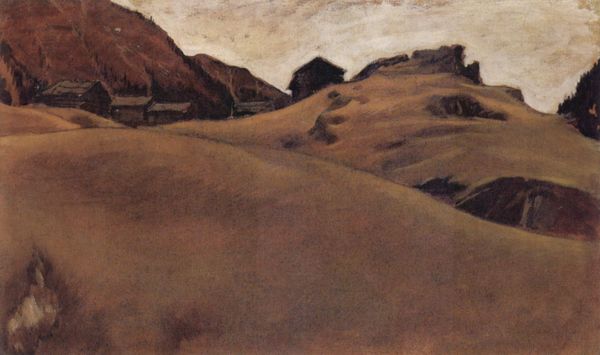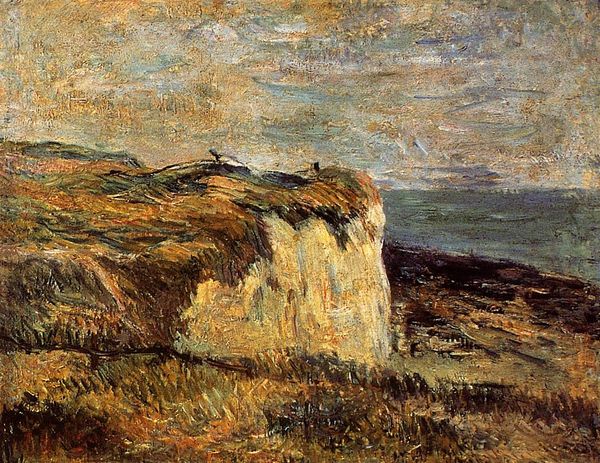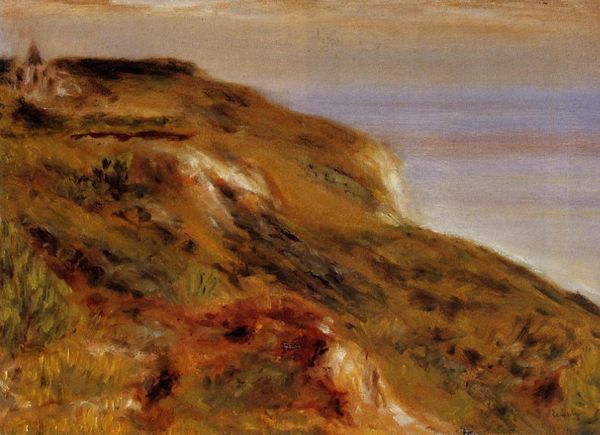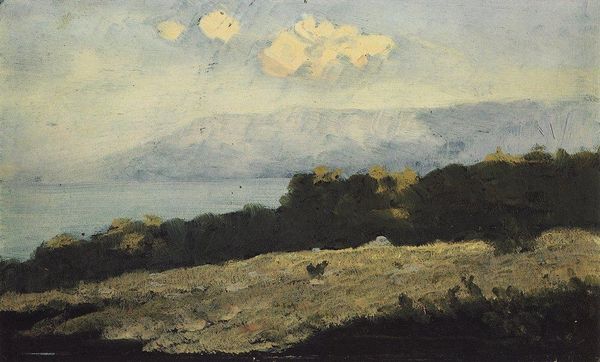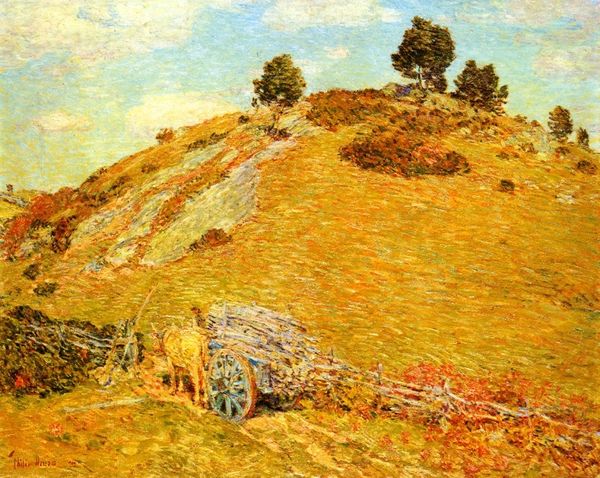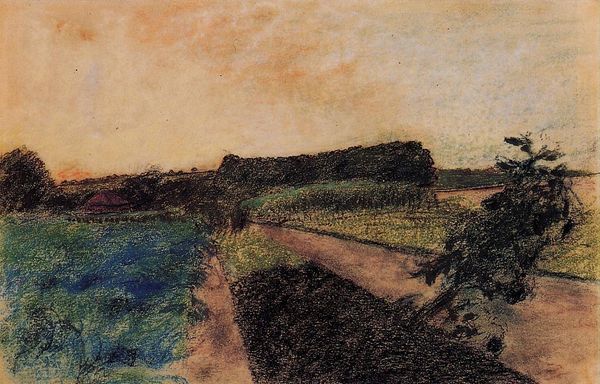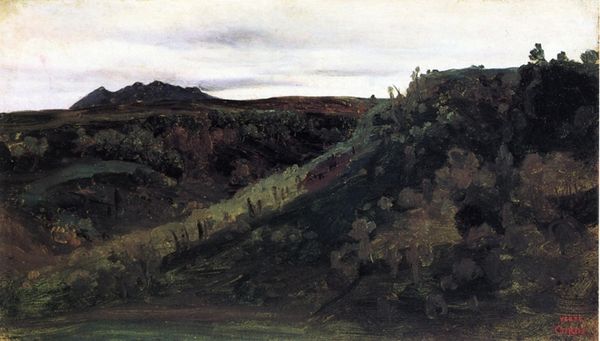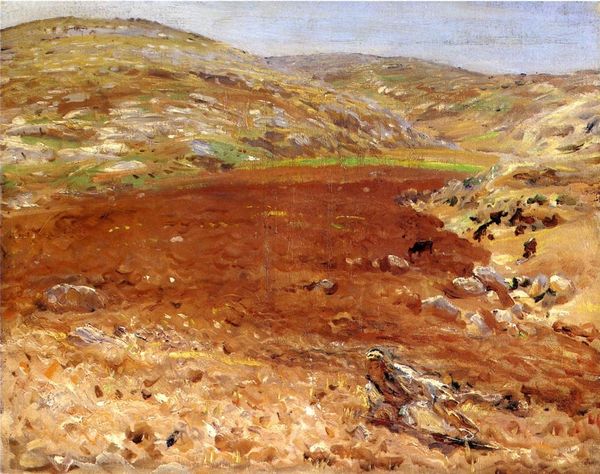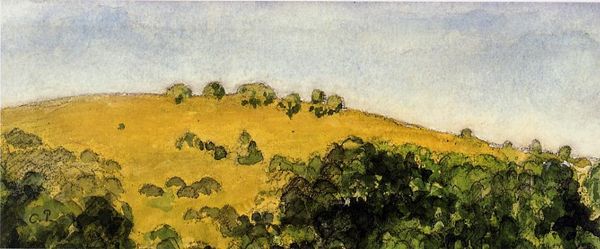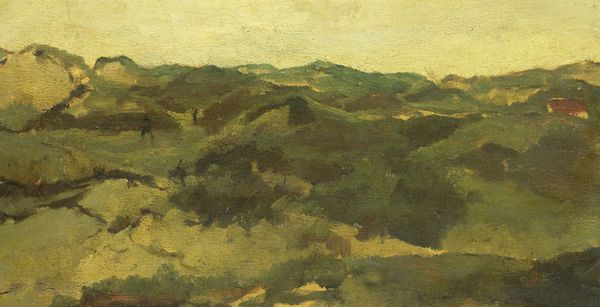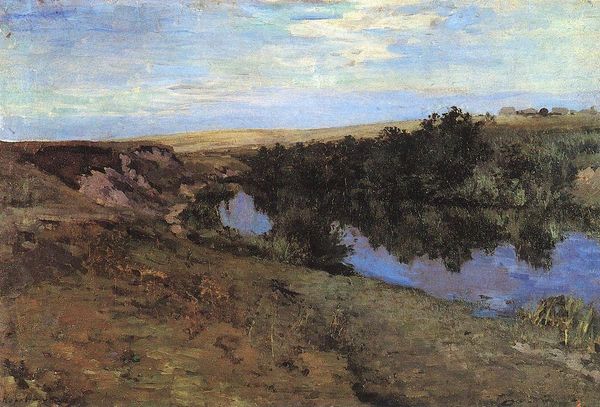
painting, plein-air, oil-paint
#
painting
#
impressionism
#
plein-air
#
oil-paint
#
landscape
#
impressionist landscape
#
oil painting
#
seascape
#
post-impressionism
#
realism
Copyright: Public domain
Curator: Welcome. Before us hangs Van Gogh's “Dunes,” an oil painting created in 1882. It’s part of a private collection, a relatively early work painted before his move to France. Editor: It has a rather muted palette for a Van Gogh, doesn't it? An earthy blend that feels both solid and somewhat melancholy. The strokes are vigorous, but contained. Curator: Precisely. Note how Van Gogh constructs space. He employs a high horizon line, pushing the landscape forward. The textural variation invites close study, while the subtle gradations offer a clear, almost classical organization. Editor: But it’s the materiality that fascinates me. Imagine the young artist battling the elements, grappling with wet sand possibly mixed in his paints. This wasn't detached observation; this was an immediate wrestling with nature. I wonder what tools he employed to apply paint to achieve such textures. Curator: Certainly, plein-air painting of this sort involves an intensive encounter, but I view the painting through its compositional dynamics and representational schema. There is a clear effort toward rendering what he sees and feels, albeit mediated through artistic structures available at the time. Editor: Structures, yes, but consider also the labour: the transportation of equipment, the mixing of paints under fluctuating conditions, his potential frustration... these are all part of the "text," equally critical to understanding the final artifact. Curator: Perhaps, but without understanding how his organization of planes—foreground, middle ground, distant sky—produces pictorial depth and affective response, we miss his artistry. How can the work succeed, and express so effectively without engaging deeply the intrinsic forms and shapes? Editor: Well, without recognising how his materials were gathered, prepared, applied, and by whom we would miss something critical too. How Van Gogh’s encounter with that specific landscape, as embodied by his engagement with it's matter and materiality. Curator: Food for thought. It's fascinating how approaching Van Gogh’s “Dunes” from differing perspectives brings forward new, interconnected meanings and discussions. Editor: Yes, by tracing how art transforms material experience, maybe it helps us better consider art’s value, labor, and connection with our material lives.
Comments
No comments
Be the first to comment and join the conversation on the ultimate creative platform.
